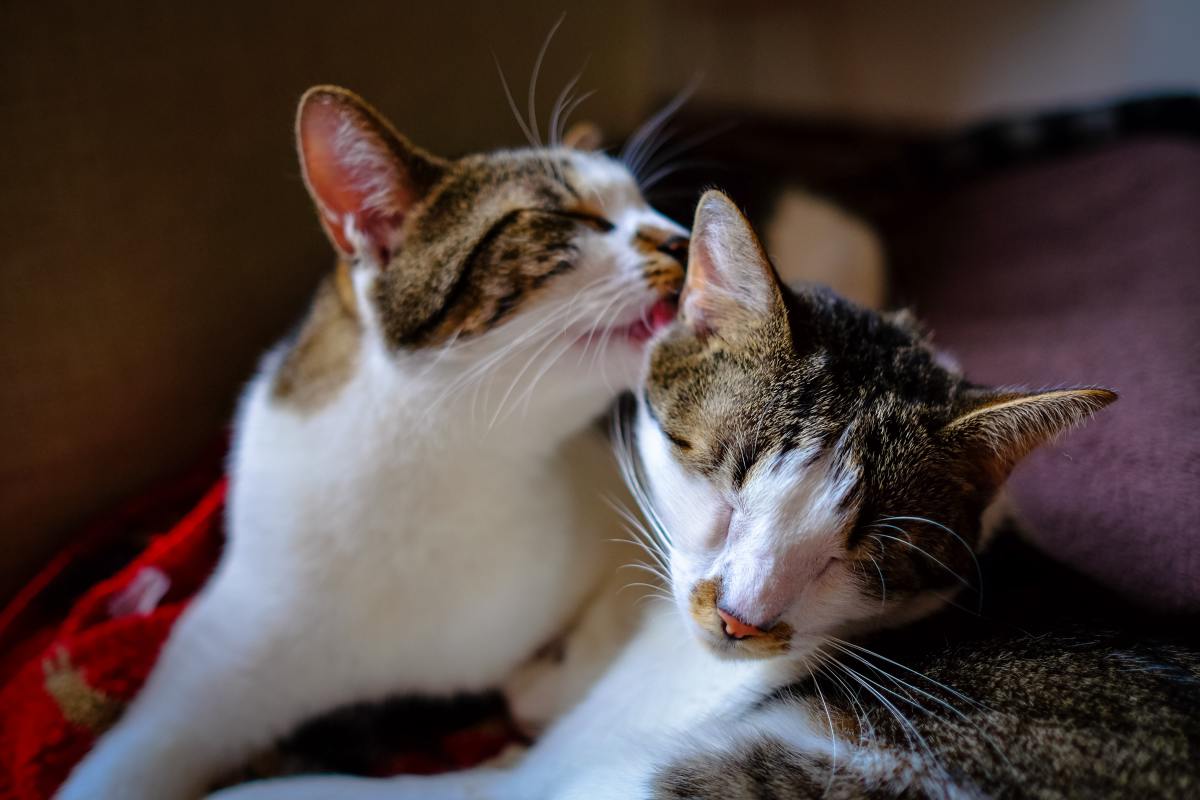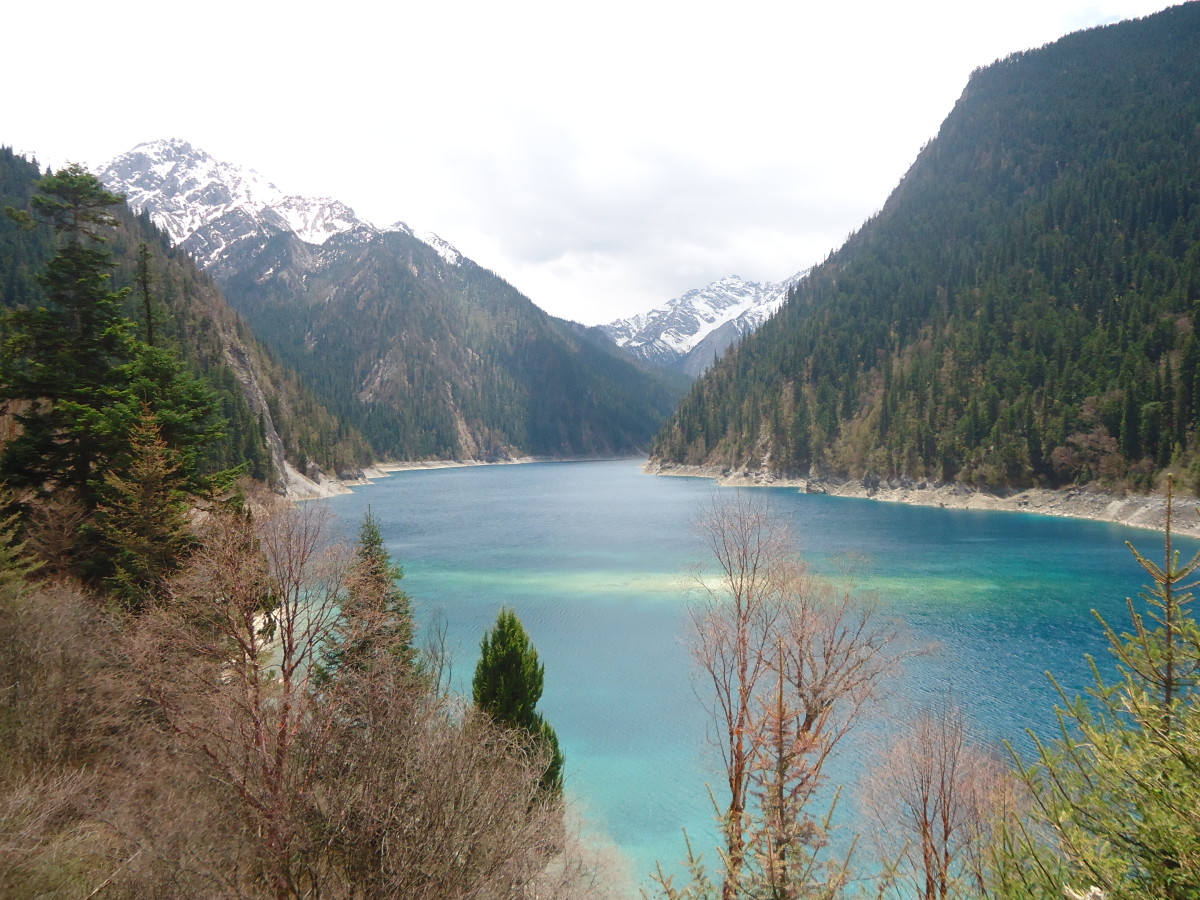- HubPages»
- Travel and Places»
- Visiting Asia»
- Eastern Asia
Matriarchal Societies: The Mosuo of Southern China and the Minangkabau of West Sumatra, Indonesia
Abstract
Matriarchies are not inverse patriarchies. Rather, matriarchy generally operates entirely within its own unique paradigm. Typically, societies ruled by women are egalitarian, nonviolent, and cooperative. By examining the matriarchal cultures of the Chinese Mosuo and the Indonesian Minangkabau, this paper identifies the social, political, and economic underpinnings of matriarchy. This paper then explores the benefits of matriarchy, as well as the theoretical advantages of matriarchal egalitarianism for modern patriarchy. Lastly, this article discusses the future of intercultural engagement with the Mosuo, Minangkabau, and other matriarchal societies.
Keywords: matriarchy, Mosuo, Minangkabau, society, culture
Matriarchal Societies:
The Mosuo of Southern China and the Minangkabau of West Sumatra, Indonesia
It may sound bizarre to a Western visitor, but anthropologists say because the men have no power, control no land, and play subservient sexual roles, they have nothing to fight over— making this one of the most harmonious societies on the planet. The Mosuo people, estimated to number around 50,000, have no word for war, no murders, no rapes, no jails.
—“Chito” Sta. Romana and Mark Litke, ABC News, 2007
The system is underpinned by a fundamental belief that women are more capable than men, mentally and even physically. The Mosuo also believe that everything people value in the world came from a woman, not a man. All male deities are secondary to their patron goddess.
—Amy Qin, The New York Times, 2015
Although Islam may be generally thought to subordinate women and girls and to put men and boys in a dominant societal position, this devout Muslim Minangkabau community in Indonesia puts women at the centre of household and the community, presenting a very different picture of Muslim women.
—Sadiq Bhanbhro, The Conversation, 2017
In the Yunnan and Sichuan provinces of southwest China, villages cluster at 8,580 feet above sea level, translating into 12600 miles. The majority of these villages are near Lugu Lake, which rests at the highest elevation of any lake in the Yunnan province and is China’s second deepest body of water. (Public Broadcasting Service, n.d., para. 2) Cumulatively, 5600 people reside within the villages, comprising the 2000-year-old matriarchal Mosuo society. (Public Broadcasting Service, n.d., para. 1) They often refer to themselves as the Na, (Michaud, 2011) and are classified within one of 56 official ethnic minority groups in China. (Minority Rights Group International, 2017, para. 5-6) Generally, they thrive off of agriculture, communal living, a barter economy, and the intentional rejection of recent technologies. Mosuo society lived in isolation from other societies until the 1970s, but outside influences have gradually begun to infiltrate themselves into Mosuo culture. (PBS, n.d., para. 2-5)
Meanwhile, Minangkabau society resides in the Indonesian highlands of West Sumatra. Also known as the Minang people, Minangkabau culture exists within a matriarchal society, much like the Na. Minang people, too, have a general history of rejecting recent technological developments, and are now struggling to maintain their cultural individuality in the face of international influences. Also like Mosuo society, Minangkabau society commonly relies on livestock, land, and water for food. Their community, however, is much larger than that of the Na, both in terms of geography and population. With about 4 million citizens, the land occupied by Minangkabau society is approximately the size of Los Angeles. (Bhanbhro, 2017; Lam, 2016)
Purpose of Study
The purpose of this paper is to understand the inner workings of matriarchal societies. Through discussing the history of the Mosuo and Minangkabau societies, this paper seeks to identify the historical and present conditions responsible for their matriarchal natures. Through then examining the ways in which these societies presently function, this paper seeks to identify the cultural impacts of matriarchy.
Recognition of the positive cultural impacts of matriarchy, combined with acknowledgement of the historical factors supporting matriarchal cultural developments, is utilized in this article to discuss the role of matriarchy within the respective contexts of Mosuo culture, Minangkabau culture, and globalized culture. This article discusses the need for the preservation of Mosuo and Minangkabau values, ultimately posing the question of how other societies might benefit from integrating these values into their own.
Significance of Study
This article is significant in two primary ways: First, with rapid developments in war technology has come the heightened risk of war-induced catastrophe. In fact, many experts believe that since WWII, the world has not been as dangerous as it currently is. (Chan, 2018) However, matriarchal leadership styles and gender relations within matriarchal societies are often linked to pacifistic conflict resolution approaches. Therefore, integration of matriarchal leadership practices into generally non-matriarchal societies may result in global positive change regarding successful diplomacy and peaceful communications, both intercultural and intracultural. Ultimately, these changes may result in increased global safety. (Goettner-Abendroth, 2005; Reeves, 2008)
Second, the discussion in this article is predicated on a belief in the importance of cultural humility. Genuine understanding of non-Western, non Judeo-Christian matriarchies requires a commitment to both recognizing ethnocentrism and evolving accordingly. This discussion calls for ongoing critical analysis of previously unquestioned beliefs and stereotypes, many of which have been naturalized by Western, Judeo-Christian, and patriarchal structures, regarding gender, religion, and Eastern beliefs and philosophies. Posing a challenge to patriarchal and Orientalist perceptions, this discussion encourages humanization of the “other.” Such a framework lends itself to an evolution away from the objectification and dehumanization which often sets the stage for violent conflict, therefore bringing global society closer to the potential for increased international peace and safety.
Review of the Scholarly Literature
Before discussing matriarchal societies, an understanding of what constitutes a matriarchal society is needed. The first definition for “matriarchy” offered in the English Oxford Living Dictionary is “a system of society or government ruled by a woman or women.” (n.d., n.1) This definition, however, is not specific enough for the purposes of this paper. What does it mean, exactly, to “rule” a society? The notion of “ruling” seems to be culturally-specific. In turn, Mosuo and Minangkabau women rule differently from one another. Thus, the respective appearances and functions of the Mosuo and Minangkabau matriarchies differ. (Lam, 2016; PBS, n.d.) To identify the functions of matriarchy within each culture, this article will examine gender relations in each society through three lenses: Economic, political, and social.
Matriarchy Within the Mosuo Paradigm
One of the most distinct aspects of Mosuo society is “axia”, or “walking marriage.” The practice of axia separates parenthood and familial structures from romantic relationships, thereby eradicating any potential need for marriage as an economic institution. Rather than collaborating with male partners on financial, household, and familial responsibilities, Mosuo mothers take full responsibility for both parenthood and generally overseeing the home sphere. (Booth, 2017; Genova, 2017)
In a “walking marriage”, both members of a couple are essentially single. Conventionally, a Mosuo man will continue living with his mother, only visiting his female partner at night. In the morning, he will return to his mother’s house. This is known as “tisese”, which directly translates as “to and fro.” If a woman becomes pregnant, her male partner is not expected to function as a father in any patriarchally conventional or Western sense of the word. In fact, Mosuo people have no word for “father.” (Shaitly, 2010)
Instead, uncles are the primary male caregivers for Mosuo children. Mosuo clans of three or more generations usually live together under one roof, allowing children to live with their uncles. This ensures that while Mosuo women enjoy the independence of a society without the economically transactional aspects of marriage and motherhood, they still have plenty of support in raising their children. (Harrison, 2014) Within this family structure, women carry on the family name. This is one reason why the Mosuo people often view the birth of a daughter as a greater blessing than the birth of a son. Property is owned, controlled, and inherited by women, who also typically make financial decisions. (Qin, 2015)
Socially, normative gender roles in Mosuo culture lend themselves more easily toward female empowerment. In a study published by the Economic Science Association in 2014, for example, researchers found that in Muoso society, men donate over twice the amount of money donated by women. Within the United States’ comparably patriarchal society, on the other hand, researchers observed the opposite result. Gender socialization of children is the hypothesized explanation for these results. Specifically, Muoso girls are commonly taught financial shrewdness, in preparation for their potential future positions as household heads. This diverges from the gender socialization of Mosuo boys, who learn about socialization and gift-giving, as such lessons align with customary expectations of men within “walking marriages.” These lessons replace budgetary lessons for Muoso boys, who are expected to remain financially dependent on their female relatives. In a phrase, Mosuo gender roles have been summarized as “Uncle in charge of etiquette and mother in charge of finance.” (Gong, Yan, & Yang, 2014, para. 4)
In addition to economic empowerment, the absence of binding marital agreements in Muoso society has also allowed for women's sexual empowerment. As a result, constructions and perceptions of female sexuality in Mosuo culture differ radically from those in many patriarchal cultures. Without the familial and marital structures which have become normalized and expected in many other societies, Mosuo society lacks a system on which to predicate associations between sin, shame, and sexuality. In Mosuo society, there is no equivalent to “premarital” sexual activity or pregnancy. Instead, encouragement of pregnancy is often motivated by the custom of passing down the family name through the mother, combined with the governmental exception to China’s two-child policy. Mosuo women are allowed to have up to three children, due to legal categorization of Mosuo people as an “ethnic minority.” Even as Han Chinese women were subjected to the one-child policy, Mosuo women were granted this unique liberty. (Vogt, 2009)
Overall, a belief in female intellectual and physical superiority is not uncommon in Mosuo culture. These beliefs have, in many ways, shaped an opportune culture for girls and women to both become aware and take advantage of their potential. The division of labor, for instance, assigns very physical tasks to women. In this sense, women in Mosuo society are more agriculturally involved than are men, who are taxed with much less responsibility than they typically are in patriarchal societies. When a man does not succeed in a task, he is typically not scolded for it, but rather is seen as having not been “up to task.” As a result of gender socialization in Mosuo culture, Mosuo women are often physically stronger than women of other cultures. Similarly, they are often physically stronger than their Mosuo male counterparts. They commonly continue to perform very physical tasks into old age, making many Mosuo women maintain this strength into their elderly years. (Genova, 2017)
Through a political lense, the combined prevalence of agriculture with communal living in Mosuo culture has fostered a system resembling egalitarian socialism. Resources are distributed evenly, removing the incentive to compete for wealth and socioeconomic status. Correspondingly, Mosuo power structures have resulted in the absence of politically charged power struggles among men. The tradition of women occupying many of the most authoritative positions in society has created a cultural paradigm which is incompatible with male power disputes, producing far less violence than is produced in many patriarchal societies. (PBS, n.d.; Vogt, 2009)
To understand why matriarchal societies do not breed power struggles between women, it must be understood that matriarchies are not inverse patriarchies. Matriarchal societies generally have very different value systems than do patriarchal societies, with egalitarianism often emerging as a high priority. Mosuo women widely view leadership as a job, rather than as a reason to exercise unnecessary control. Within this framework, authority does not equate to subjugation of others. Accordingly, Mosuo language, the only remaining pictographic language in the world, has no words for “murder”, “rape”, “war”, or “jail.” (PBS, n.d., para. 9)
This style of leadership is hardly comparable to the leadership styles often exercised by powerful women within patriarchal societies. One commonly proposed explanation for the differing embodiments of female leadership in patriarchal to matriarchal societies is the difference between perceptions of “leadership” in matriarchal versus patriarchal societies. Within patriarchy, qualities seen as definitive of an effective leader overlap with qualities seen as belonging to the “typical man.” (Moran, 1992, p. 478) Contrastingly, matriarchies largely hold “maternal” qualities in high esteem, and are therefore more likely to associate them with strength, power, competency, and effective leadership. This explanation is especially relevant to Mosuo culture, which reveres women for their power to give life. This likely relates to the enduring history of male leaders employing maternal leadership strategies within Mosuo culture. (Ethnic China [as cited in Hays, 2008; Vaughan, 2007)
While mayors in Mosuo culture are often men, a man’s social status is not greatly elevated by occupying the position of “mayor.” Elected household heads, which are always women and often grandmothers, are still considered to occupy the highest positions of authority. Men are consulted on large decisions, but decisions are ultimately up to household heads. Conventionally maternal approaches to leadership are so greatly favored in Mosuo culture that in ancient Mosuo culture, male leaders are said to have apologized to their subjects when their subjects revolted. In this account, apologies by leaders are based on the belief that leaders are at fault, due to poor governing, for citizen revolts. (Booth, 2017; Ethnic China [as cited in Hays, 2008] Genova, 2017; Kuhn, 2016)
Matriarchy Within the Minangkabau Paradigm
Unlike Mosuo culture, Minangkabau culture adheres to conventional marriage as a socioeconomically binding institution. Spouses live together, function as co-parents, and share property, finances, and responsibilities. However, husbands move into their wives’ houses upon marrying, as ancestry and inheritance are traced matrilineally. Husbands are considered guests in their wives’ homes, and in matters of family and children, mothers play more of a central role and wield greater power than fathers do. The Minang man’s familial role resembles that of the Mosuo man in the sense that Minang fathers are expected to be more involved with their nieces and nephews than with their own children. Likewise, the Minang woman’s role resembles that of the Mosuo woman in that Minang women have significant economic power as the primary monetary decision-makers. Along those lines, Minang women also control the economics of food and other everyday resources. Female control of property and finance is not guaranteed in the inheritance of businesses or professions though. In such cases, exceptions can be made, allowing sons to inherit these things from their fathers. (Bhanbhro, 2017; Postel-Coster & Schrijvers, 1977; Tanner, n.d.)
Socially, the gender roles assigned to Minang girls and women are more conducive to female empowerment, independence, and physical and mental excellence than are gender roles for women in many patriarchal societies. Like Mosuo women, Minang women are heavily involved in physically demanding agricultural tasks from a young age. (Sanday, 1997; Hutchinson & Underwood, 2017) Minang women also further develop their physical strength through “silek” training. Silek is a form of self-defense taught to Minang boys and girls, and its physical aspects are based on everyday bodily motions needed for the agricultural work of the Minang people. Additionally, silek develops mental agility, training pupils to integrate physical and mental dimensions of silek. “Silek lidah”, or “silek of the tongue”, refers to the use of logic and verbal conflict resolution to defend oneself through peaceful negotiation. This emphasis on skillful use of words has been linked to the plethora of achievements by Minang people, many of whom are women, in politics, business, and literature. (Murao, 2013)
Meanwhile, attitudes about female sexuality in Minangkabau culture share little to no commonalities with Mosuo attitudes about female sexuality. It is true that both cultures revere women as givers of life, but the respective manifestations of this reverence in each culture are antithetical to one another in many ways. (Genova, 2017; Goettner-Abendroth, 2018) Both cultures, and their elders in particular, are concerned with the preservation of heritage. As both cultures trace their ancestry matrilineally, they are both inclined to appreciate the woman’s vital role in this preservation. In Minangkabau culture, however, appreciation of female power can become overprotection of that same power. (Parker, 2009)
Minang women are much less sexually liberated than are Mosuo women, primarily because of the sacred status of the Minang woman’s sexuality and reproductive abilities. Sexual activity outside of marriage is strongly discouraged, largely due to the taboo nature of pregnancy before marriage. Adding to this attitude is the predominance of Islam in Minangkabau culture. While Minangkabau interpretations of Islam support women's’ education and authority, Minangkabau society generally maintains the sexual conservatism found in Islam. Sexual education is often considered irrelevant in Minangkabau society, corresponding with the history of governmental denial of teenage sexual activity. Often, Minang girls know so little about their own sexuality that they are not aware of menstruation until they experience it. While some MInangkabau children are gaining knowledge of sexuality through globalized media and entertainment, Indonesian culture is combatting the outside cultural influence of its children by marketing its own celebrity culture toward adolescents. Indonesian celebrities are often promoted through magazines, films, and television shows. In a sociopolitical context, they often function to champion conservative Indonesian values, repackaged to appeal to teen audiences. (Parker, 2009)
Politically, Minangkabau and Mosuo societies share an egalitarian nature, which is associated with the fact that both societies are agrarian and communal. Like Mosuo society, Minangkabau society is divided into many self-governed villages. (Dobbin, 2016; von Benda-Beckmann, 1994) While politically authoritative positions of power are typically held by men in these villages, (Shapiro, 2017) Minang men, like Mosuo men, are more likely to value nonviolent leadership styles. (Sanday, 2005; Tanner, 1974) From a Western perspective, the political prominence of men in Minangkabau society sometimes looks like patriarchy. However, such logic attempts to decipher Eastern culture on Western terms. Within the Minangkabau cultural paradigm, great significance is assigned to authority within the domestic sphere, the marketplace, and public ceremonies such as weddings, harvesting ceremonies, and clan leader inaugurations. (Garrison, n.d.)
Benefits of Matriarchy
Regarding cultural impacts of matriarchy, there are four major benefits which are often noted in the literature on matriarchal societies, and thus should be examined: Decreased sexual violence, greater stability for children, greater respect and support for the elderly, and higher rates of healthy body image. (Kreager & Schroder-Butterfill, 2013; Ryden, 2010; Sanday, 2003; Stacey, 2008-2009; Qin, 2015; Xuezheng, 2014)
First, sexual violence is extremely rare in both the Mosuo and Minangkabau societies. (Sanday, 2003; Mann, 1991) There are several likely reasons behind this. Three of the primary societal characteristics leading to increased rates of sexual violence include the perception of masculinity as “toughness”, customary violence, and an absence of female involvement in major decisions. (Fossett, 2013) On the other hand, in societies where women are powerful decision-makers, perceptions of women as active agents, rather than as passive objects, may be reinforced. (Mann, 1991) In the case of Mosuo society, the active roles played by women in their own sexual lives, as well as in public discourse, can further reinforce the perception of women as active agents. Within Mosuo culture, women are free to express sexual attraction, as there is no Mosuo equivalent of “slut-shaming.” (Stacey, 2008-2009) The myth of natural sexual reluctance in women, which has been used in patriarchal societies as an attempt to justify sexual violence, (Tang-Martinez, 2017, para. 1) is also absent in Mosuo culture. When a society acknowledges the sexual desires of women, that same society may subsequently find it difficult to view women as existing only for male sexual pleasure.
Although marriage is common in Minangkabau culture, Minang women are increasingly involved in controlling their own marital fates. (Tanner, 1982, p.134) While higher rates of sexual violence have been linked to bride prices, (Fossett, 2013) Minang men and women are on equal footing with one another when deciding to get married. Traditionally, proposals do not take place, and instead the decision to marry is arrived at through discussion. (Sanday, n.d., para. 4) In the case that a woman needs to leave a marriage, she can do so without suffering the economic repercussions faced by many women in patriarchal societies. When Minang couples divorce, men leave with their belongings, while women continue to remain in their own homes, keeping their own inherited fortunes. Custody disputes are uncommon, due to the mother’s central role in the home and family spheres. In this society, men lack the economic tools often used in patriarchal societies to trap women in abusive relationships, and divorce is fairly common. (Postel-Coster & Schrijvers, 1977) Women in Mosuo society are also free from cultural, social, and economic pressure to remain with abusive partners, largely because they do not make marital commitments to their partners in the first place. Although many people in Mosuo society do choose to have monogamous relationships, they are not socially pressured to do so. If a relationship runs its course, the couple is not expected to struggle to make it work. Instead, they can amicably part ways and move onto other people without stigma. When this happens, complications which typically come from having lived together and shared finances do not arise, since Mosuo couples do not typically intertwine their lives in this way to begin with. Since parenthood is completely separate from marriage, couples do not stay together for the sake of their children. For this same reason, when a romantic relationship ends, neither ex-partner’s relationship with his or her children is affected at all. (Stacey, 2008-2009)
This leads to the second major benefit of matriarchy: Children raised in matriarchal societies have immense familial stability. When women are not stigmatized for leaving abusive partnerships, children are much less likely to grow up with conflict or domestic violence in their own homes. In Mosuo culture specifically, the nonexistence of marriage also means the nonexistence of children of divorce. In turn, Mosuo children never need to adjust to new stepparents, nor do they need to constantly move back and forth from one parent’s home to the next. In both Mosuo and Minangkabau cultures, children with busy mothers are less likely to be left alone to fend for themselves. Since men do not inherit property, but rather are expected to live at home and assist their sisters with childcare, women can look to their brothers as steady support systems for raising children. (Handwerk, 2009; Stacey, 2008-2009) Even when Minang men marry and move to their wives’ homes, they are expected to remain involved in the lives of their sisters, nieces, and nephews. (Kato, n.d., p. 4) Moreover, this focus on extended family normalizes the system of multiple generations living together, which allows children greater access not only to their uncles, but also to their aunts, great aunts and uncles, grandparents, and cousins. (Booth, 2017)
The third benefit of matriarchy is that of its impact on elders. As familial structures within matriarchal societies often encourage communal living and economic egalitarianism, elders of these societies are free of many of the burdens typically associated with aging in other societies. First of all, elders who live among their extended families can resist cognitive decline, loneliness, and isolation by remaining socially and mentally engaged. Their adult children are present to assist them with labor and household chores, and the system of shared wealth inherent within the communal living structure guarantees a life sustaining income. Consequently, poverty in old age is not often a concern for members of matriarchal societies. In matriarchal societies, elders conventionally receive dignified treatment and remain involved in community affairs. In parallel fashion, grandmothers remain essential to their families and villages. (Kreader & Schroder-Butterfill, 2013)
The fourth and final major benefit of matriarchy is improved body image for all citizens, largely because the female body is not culturally defined as a sexual object. When female body image is improved, daughters and sons alike can then look to their mothers to observe healthy approaches to body image. Boys and men are also free from pressures to fit their bodies into patriarchal constructs of masculinity, which often equate masculinity with dominance and excessive force. (Brace-Gowan, 2004; Wienke, 1998) Correspondingly, when physical power is not viewed as an exclusively masculine trait, pressure on girls and women to become unnaturally thin is greatly decreased. Appreciation of the female body’s physical power to give life, in particular, appears linked to the lack of shame surrounding female sexuality, especially in terms of Mosuo culture. This allows for a decrease in body image problems caused by patriarchal stigmatization of female secondary sex characteristics. (Ryden, 2010)
Conclusion
Although no societal structure is flawless, the influence of matriarchal egalitarianism has the potential to remedy the destructive forces plaguing patriarchal societies. Socially, politically, and economically, the demand for an alternative to patriarchal exploitation and aggression is unmistakable. In modern America, for instance, over 25 million senior citizens live in poverty. Furthermore, older women’s Social Security benefits in 2014 averaged approximately $4500 less, annually, than those of older men. (National Council on Aging, n.d., para. 1-5) At least 30 million people in America have an eating disorder, and at least one person passes away from an eating disorder every 62 minutes. (National Association of Anorexia Nervosa and Associated Disorders, n.d., para. 1) Monthly, 50 women in the United States are killed by domestic gun violence, and the mortality rate of a U.S. women suffering from domestic violence increases by 500% when a gun is present. (Everytown for Gun Safety, 2017) Men, as well as women, can thrive on the freedom and safety which can be catalyzed through matriarchal nonviolence and mutual respect. Between 1999 and 2009, male hospitalization for eating disorders increased by 53%. (National Eating Disorders Association, 2018). In terms of male safety, the FBI has reported that American men are considerably more vulnerable than women to gun violence by strangers. (Carlson, 2017) Adaptation of matriarchal leadership styles can also have sweeping positive implications for foreign affairs.
If patriarchal societies are to learn from matriarchal culture and apply these lessons to develop their own cultures, cultural exchange and appreciation is needed. This is especially true in terms of the history of Western, Judeo-Christian society’s history of cultural imperialism, appropriation, and distortion. Respectful observation of the Mosuo and Minangkabau matriarchies, in particular, requires interpreting their cultural, historical, and religious paradigms on their terms. Productive research on these societies must keep in mind that unfamiliar traditions, customs, or living arrangements are not indicative of primitivism or underdevelopment.
Future research on matriarchal cultures, such as those found in Mosuo and Minangkabau societies, should ideally include further investigation into the roles of men and boys within matriarchy. On a related note, future research should also explore possible strategies for patriarchal societies to communicate with and make sense of matriarchal societies, subsequently advancing their own societies. Cognizance of the role of matriarchy within the lives of diverse populations, rather than only in the lives of women within those societies, can encourage global esteem for matriarchal cultures.
References
Benda-Beckmann, C.E. V. (1994). Radboud Repository of the radboud university nijmegen (The Broken Stairways to Consensus: Village justice and State Courts in Minangkabau). Nijmegen, Netherlands: Radboud University. Retrieved from http://repository.ubn.ru.nl/bitstream/handle/2066/147499/mmubn000001_000851809.pdf
Bhanbhro, S. (2017, January 12). Indonesia’s Minangkabau culture promotes empowered Muslim women. The Conversation. Retrieved from https://theconversation.com/indonesias-minangkabau-culture-promotes-empowered-muslim-women-68077
Booth, H. (2017, April 1). The kingdom of women:The society where a man is never the boss. The Guardian. Retrieved from https://www.theguardian.com/lifeandstyle/2017/apr/01/the-kingdom-of-women-the-tibetan-tribe-where-a-man-is-never-the-boss
Brace‐Govan, J. (2004). Weighty matters: control of women’s access to physical strength. The Sociological Review, 52, 03-531. doi:10.1111/j.1467-954X.2004.00493.x
Carlson, J. (2013, October 17). The equalizer? Crime, vulnerability, and gender in pro-gun discourse. Feminist Criminology, 9 (1), 59-83). Thousand Oaks, CA: SAGE. doi:10.1177/1557085113502518
Chan, S. (2018, January 25). Doomsday Clock is set at 2 minutes to midnight, closest since 1950s. The New York Times. Retrieved from https://www.nytimes.com/2018/01/25/world/americas/doomsday-clock-nuclear-scientists.html?mtrref=www.google.com&mtrref=www.nytimes.com&gwh=83AE16B4B8E5763E95C83A8DEF5BC375&gwt=pay
Dobbin, C. (2016, November 10). Islamic revivalism in a changing peasant economy: Central Sumatra, 1784-1847. Abingdon, United Kingdom: Routledge. Retrieved from https://books.google.com/books?id=JzR6DQAAQBAJ&printsec=frontcover#v=onepage&q&f=false
Everytown for Gun Safety. (2017). Gun violence by the numbers. Retrieved from https://everytownresearch.org/gun-violence-by-the-numbers/
Fossett, K. (2013, September 11). How does a country develop a 60 percent rape rate? Foreign Policy. Retrieved from http://foreignpolicy.com/2013/09/11/how-does-a-country-develop-a-60-percent-rape-rate/
Garrison, L.T. (n.d.). Modern societies where women literally rule. Retrieved from http://www.prf.jcu.cz/data/files/20/70/444/26252.matriarchies.pdf
Genova, A. (2017, August 14). Where women reign: An intimate look inside a rare kingdom. National Geographic. Retreived from https://www.nationalgeographic.com/photography/proof/2017/08/portraits-of-chinese-Mosuo-matriarchs/
Goettner-Abendroth, H. (2007). Matriarchal society and the gift paradigm: Motherliness as an ethical principle. In G. Vaughan (Ed.), Women and the gift economy: A radically different worldview is possible (pp. 99-107). Toronto, Canada: Inanna Education. Retrieved from http://gift-economy.com/wordpress/wp-content/uploads/2013/08/womenandthegifteconomy.pdf
Goettner-Abendroth, H. (2018). Re-thinking ‘matriarchy’ in modern matriarchal studies using two examples: The Khasi and the Mosuo. Asian Journal of Women's Studies, 24 (1), 3-27. doi: 10.1080/12259276.2017.1421293
Handwerk, B. (2009, June 18). No-fathers day: Remote group has no fathers, and never did. National Geographic News. Retrieved from https://news.nationalgeographic.com/news/2009/06/090619-fathers-day-2009-no-fathers.html
Harrison, J. (2014, September 22). Separating marriage from childbearing: The Mosuo. The Society Pages. Retrieved from https://thesocietypages.org/socimages/2014/09/22/separating-marriage-from-childrearing-the-mosuo/
Hays, J. (2008). Facts and details (Mosuo Minority). Retrieved from http://factsanddetails.com/china/cat5/sub87/item182.html
Kato, T. (n.d.). Change and continuity in the Minangkabau matrilineal system. Ithaca, NY: Cornell University. Retrieved from https://ecommons.cornell.edu/bitstream/handle/1813/53654/INDO_25_0_1107119884_1_16.pdf?sequence=1&isAllowed=y
Kuhn, A. (2016, November 26). The place in China where the women lead. National Public Radio. Retrieved from https://www.npr.org/sections/parallels/2016/11/26/501012446/the-place-in-china-where-the-women-lead
Kreager, P., & Schröder-Butterfill, E. (2008). Indonesia against the trend? Ageing and inter-generational wealth flows in two Indonesian communities. Demographic Research, 19(52), 1781–1810. http://doi.org/10.4054/DemRes.2008.19.52
Lam, M. (2016, July 6). A glimpse inside the world’s largest matrilineal society. The Washington Post. Retrieved from https://www.washingtonpost.com/news/in-sight/wp/2016/07/06/a-glimpse-inside-the-worlds-largest-matrilineal-society/?utm_term=.3b561b7d045e
Mann, J. (1991, December 4). Not a question of chromosomes. The Washington Post. Retrieved from https://www.washingtonpost.com/archive/local/1991/12/04/not-a-question-of-chromosomes/0f04a6f6-206d-4139-a691-69e79ab2f199/?utm_term=.c565200c1222
Matriarchy [Def. 1]. (n.d.). OED Online. In Oxford Dictionary. Retrieved April 16, 2018 from https://en.oxforddictionaries.com/definition/matriarchy
Minority Rights Group International. (November 2017). World Directory of Minorities and Indigenous Peoples (China). Retrieved from http://minorityrights.org/country/china/
Moran, B. B. (n.d.). Gender differences in leadership. Champaign, IL: Illinois Digital Environment for Access to Learning and Scholarship. Retrieved from https://www.ideals.illinois.edu/bitstream/handle/2142/7791/librarytrendsv40i3h_opt.pdf
Murao, S. (2013, February). A cultural anthropological study of body techniques for protection: The case study of Indonesian Minangkabau. Ars Vivendi Journal, 3, 51-68. Kanagawa, Japan: Centre for Promotion of Integrated Sciences. Retrieved from http://www.ritsumei-arsvi.org/uploads/publications_en/20/2013AVJ_no3_Murao.pdf
Michaud, A. (2011). The tones of numerals and numeral-plus-classifier phrases: on structural similarities between Naxi, Na and Laze. Linguistics of the Tibeto-Burman Area, 34 (1), 1-26. Los-Angeles, CA: University of California Department of Linguistics. Retrieved from https://halshs.archives-ouvertes.fr/halshs-00821180/
National Association of Anorexia and Associated Disorders. (n.d.). Eating disorder statistics. Retrieved from http://www.anad.org/education-and-awareness/about-eating-disorders/eating-disorders-statistics/
National Council on Aging. (n.d.). Economic security for seniors facts. Retrieved from https://www.ncoa.org/news/resources-for-reporters/get-the-facts/economic-security-facts/
National Eating Disorders Association. (2018). Statistics and research on eating disorders. Retrieved from https://www.nationaleatingdisorders.org/statistics-research-eating-disorders
Parker, L. (2009, May). Religion, class and schooled sexuality among Minangkabau teenage girls. Bijdragen tot de Taal-, Land- en Volkenkunde / Journal of the Humanities and Social Sciences of Southeast Asia and Oceania ,165 (1), 62-90. Leiden, Netherlands: Royal Netherlands Institute of Southeast Asian and Caribbean Studies. doi: 10.1163/22134379-90003643
Public Broadcasting Service. (n.d.). Frontline/World Rough Cut (The Women’s Kingdom). Retrieved from http://www.pbs.org/frontlineworld/rough/2005/07/introduction_tolinks.html
Ryden, E. (2010). Reflections on peace, modernity, and civilization. Taiwan International Studies Quarterly, 6 (3), 185-208. Sinjhuang, Taiwan: Fu Jen University. Retrieved from http://www.tisanet.org/quarterly/6-3-7.pdf
Sanday, P.R. (1997). Eggi’s village: Reconsidering the meaning of matriarchy. Expedition, 39 (3), 27-36. Philadelphia, PA: Penn Museum. Retrieved from https://www.penn.museum/documents/publications/expedition/PDFs/39-3/Eggi's.pdf
Sanday, P.R. (2010, July 2). Matriarchy. The Oxford Encyclopedia of Women in World History. Oxford, England: Oxford University Press. Retrieved from https://feminismandreligion.com/2011/07/29/matriarchy-by-peggy-reeves-sanday/
Sanday, P.R. (2005, September 29-October 2). Matriarchal values and world peace: The case of the Minangkabau. Paper presented at the Societies of Peace 2nd World Congress on Matriarchal Studies, San Marcos and Austin, TX. Retrieved from http://www.second-congress-matriarchal-studies.com/sanday.html
Sanday, P.R. (2003). Rape-free versus rape-prone: How culture makes a difference. In C.B. Travis (Ed.), Evolution, gender, and rape. (pp.337-362). Cambridge, MA, & London, England: Massachusetts Institute of Technology. Retrieved from https://books.google.com/books?hl=en&lr=&id=a2TTPKFUXgkC&oi=fnd&pg=PA337&dq=minang+rape+free&ots=npGHTmmfnS&sig=QZVQ1pQ8izgFOjitioKFMzb_XrU#v=onepage&q&f=false
Shaitly, S. (2010, December 18). Is China’s Mosuo tribe the world’s last matriarchy? The Guardian. Retrieved from https://www.theguardian.com/lifeandstyle/2010/dec/19/china-mosuo-tribe-matriarchy
Shapiro, D. (2011, September 4). Indonesia’s Minangkabau: The world’s largest matrilineal society. The Daily Beast. Retrieved from https://www.thedailybeast.com/indonesias-minangkabau-the-worlds-largest-matrilineal-s
Schrijvers, J, & Postel-Coster, E. (1977). Minangkabau women: Change in a matrilineal society. In: Archipel, 13, 79-103. doi : https://doi.org/10.3406/arch.1977.1328
Sato, Y. (2017). Matrilineal-matrilocal arrangements may end trafficking in women and children. In D. Hutchinson, & L. Underwood. (Eds.), The global status of women and girls: A multidisciplinary approach. Lanham, MD: Lexington. Retrieved from https://books.google.com/books?id=ZScsDwAAQBAJ&pg=PA62&lpg=PA62&dq=minangkabau+matriarchal+girl+rice+fields&source=bl&ots=xchkShD8aa&sig=73csOdNhsYUcRAVyH7e-2bqAac0&hl=en&sa=X&ved=0ahUKEwjSh7Pt89raAhWxs1kKHY4nC4s4ChDoAQhdMAg#v=onepage&q=minangkabau%20matriarchal%20girl%20rice%20fields&f=false
Stacey, J. (2008-2009). In Unhitching the horse from the carriage: Love and marriage among the Muoso. Journal of Law & Family Studies, 239. Retrieved from http://heinonline.org/HOL/LandingPage?handle=hein.journals/jlfst11&div=20&id=&page=
Tanner, M.P. (1982). The nuclear family in Minangkabau matriliny: the mirror of disputes
Bijdragen tot de taal-, land- en volkenkunde / Journal of the Humanities and Social Sciences of Southeast Asia, 138, 129-151. doiI:https://doi.org/10.1163/22134379-90003484
Tanner, N. (1974). Matrifocality in Indonesia and Africa and among black Americans. In L. Lamphere, & M. Z. Rosaldo. (Eds.), Woman, Culture, and Society. (pp. 129-156). Stanford, CA: Stanford University Press. Retrieved from https://books.google.com/books?id=vE85zkFdURQC&pg=PA130&lpg=PA130&dq=maternal+qualities+valued+in+minangkabau&source=bl&ots=81xSd2SPyF&sig=BN2TwxpMYERs4689ZVnW-eRFHNI&hl=en&sa=X&ved=0ahUKEwj47ZPchtvaAhWBzlkKHSgZCrkQ6AEIaTAH#v=onepage&q=maternal%20qualities%20valued%20in%20minangkabau&f=false
Qin, A. (2015, October 25). ‘Kingdom of daughters’ in China draws tourists to its matrilineal society. The New York Times. Retrieved from https://www.nytimes.com/2015/10/26/world/asia/china-mosuo-lugu-lake-matrilineal-society.html?mtrref=www.google.com&mtrref=www.nytimes.com&gwh=8E56E3DB1BBF530FF860719929F23E4B&gwt=pay
Wienke, C. (1998, June 1). Negotiating the Male Body: Men, Masculinity, and Cultural Ideals. The Journal of Men’s Studies, 6 (3), 255-282. doi:10.1177/106082659800600301
Xuezheng, Y. (2014). Traditional Mosuo child-bearing values. Chinese Sociology & Anthropology. 25 (4), 39-46. doi: 10.2753/CSA0009-4625250439
Zhang, J. (2016, September). Gender Action Portal (Culture, Institutions, and the Gender Gap in Competitive Inclination: Evidence from the Communist Experiment in China). Cambridge, MA: Harvard Kennedy School Women and Public Policy Program. Retrieved from http://gap.hks.harvard.edu/culture-institutions-and-gender-gap-competitive-inclination-evidence-communist-experiment-china








